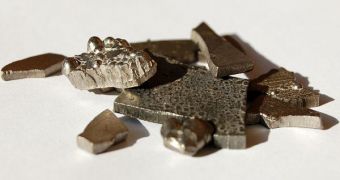Experts from the International Atomic Energy Agency (IAEA) recently managed to retrieve dozens of radioactive sources from a Lebanese research facility, where they had been left to decay for the better part of the last ten years. The active cobalt, which has now been repatriated, was a potential source of material for a “dirty bomb,” if it were to fall in the hands of terrorists. The action was part of a wider IAEA initiative meant to secure such sources, Nature News reports.
The material was first identified in 2006, in an agricultural research institute in Lebanon. Originally used in a pest-control study, the dangerous cobalt-60 irradiator had been untouched since 1996. It was, fortunately, stored in a sealed unit, which contained about 36 sources of radiation. With a combined power of 3,500 Curies, this was by far the most radioactive source in the entire country. In the wrong hands, it would have made for a powerful component in a dirty bomb.
“We were worried about the risk of theft, either for the value of the irradiator or particularly for malicious purposes,” IAEA radioactive source specialist Robin Heard, who has been in charge of overseeing the new recovery mission, said. While the cobalt was found in a sealed unit, there existed a danger of someone accidentally opening the storage room. All the personnel that originally worked with the material had already left the research facility, so there was no one to look after it.
Experts from the international agency said that, if someone had opened the container, he or she would have died within minutes, on account of the extremely high levels of radiation that the cobalt-60 emitted. When it was time to move the material back to Russia, the political instability in Lebanon, as well as the Israeli bombing of its airports prevented this from happening. Finally, on August 30th, the radioactivity source was taken to a secured, nuclear storage facility in Russia.
“This is a big enough set of sources to be worrisome were it to fall into terrorists' hands. Lebanon is certainly a country with some fairly substantial terrorist activity,” Harvard University non-proliferation expert Matthew Bunn added. “It is clearly extremely sensible that the IAEA should try to get all states to account for all radioactive sources that are within their territories,” University of Southampton Mountbatten Center for International Studies expert on nuclear non-proliferation John Simpson explained. He concluded that the recent IAEA action was a good example of “good international housekeeping.”

 14 DAY TRIAL //
14 DAY TRIAL //